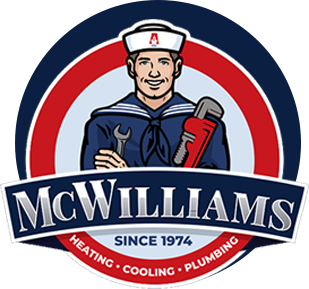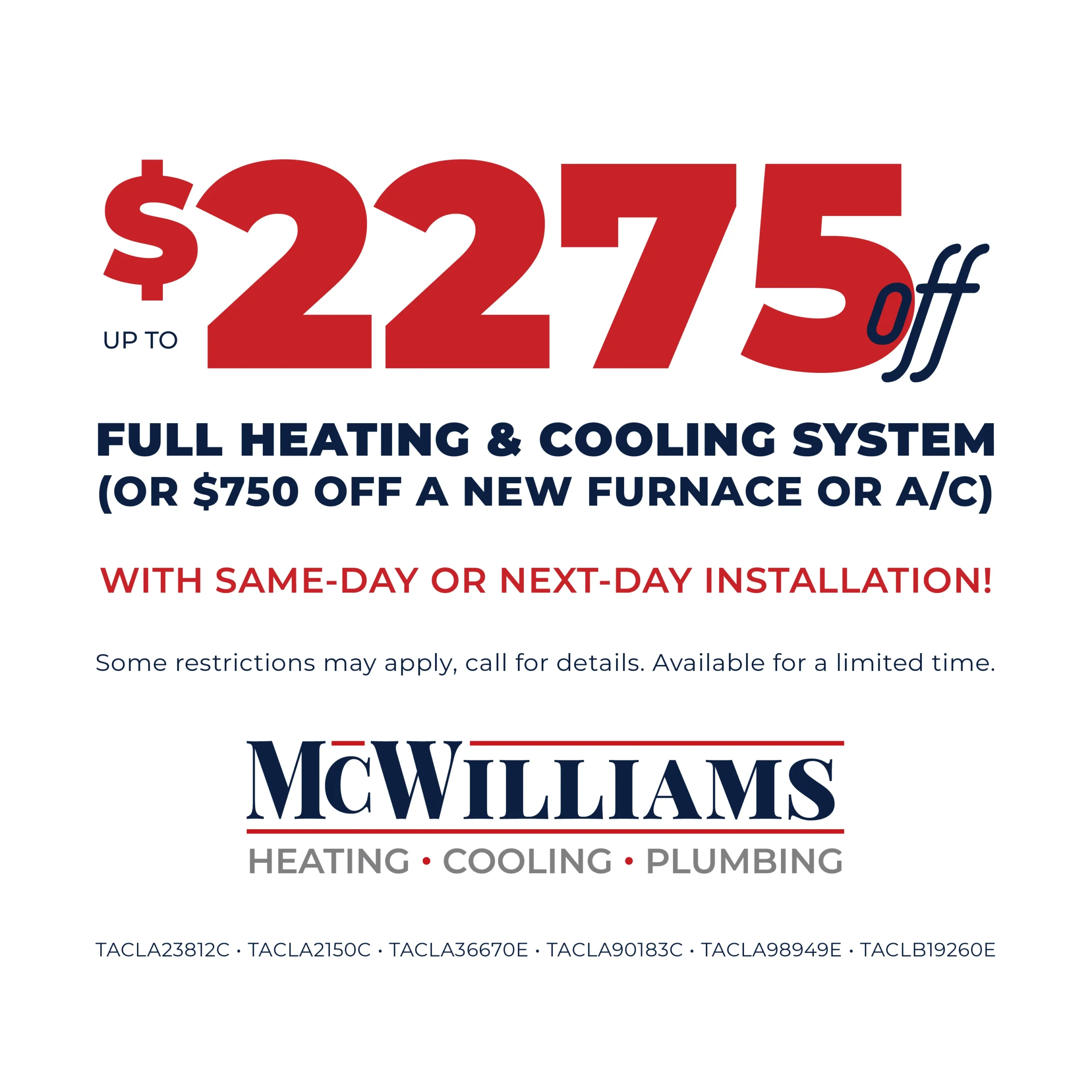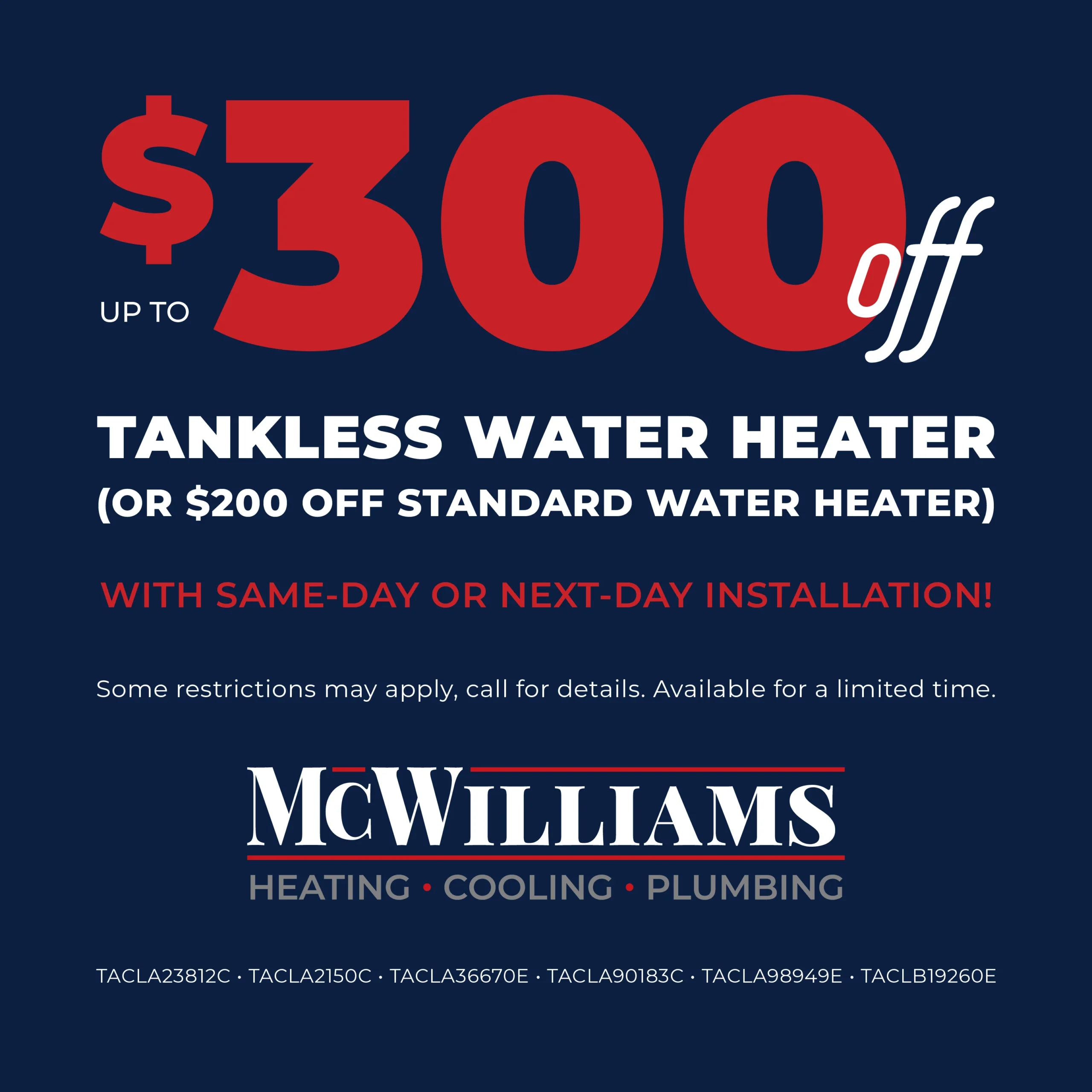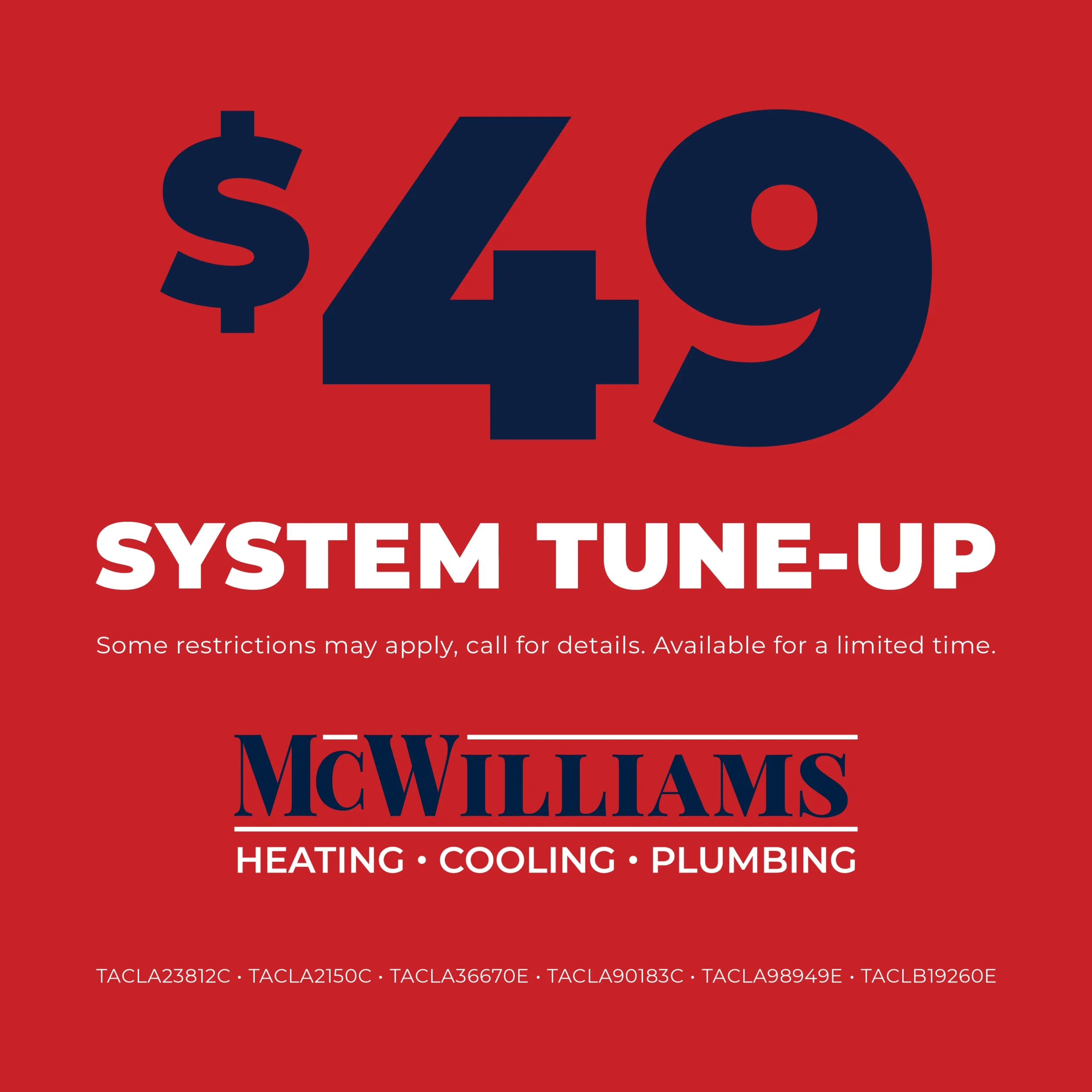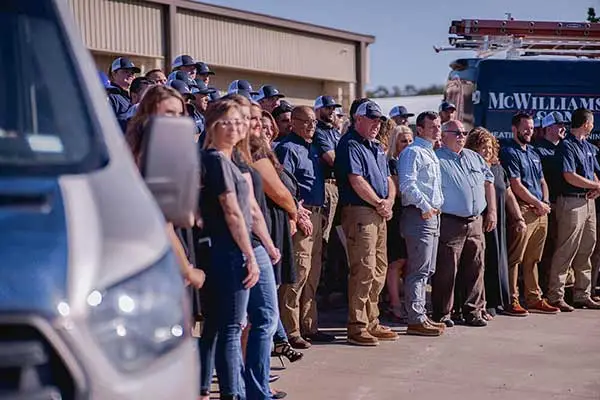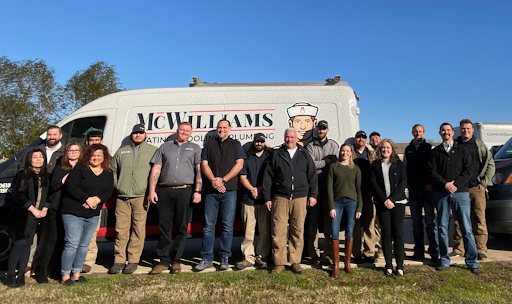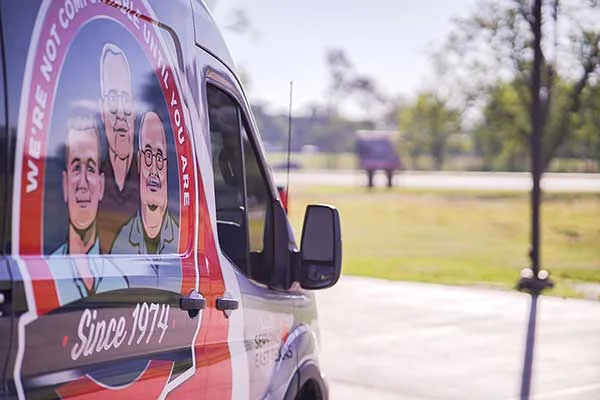Heating, Air Conditioning, and Plumbing Company in Lufkin, Nacogdoches, Livingston, & Huntsville, Houston, TX and surrounding cities
At McWilliams Heating, Cooling and Plumbing we are a heating, ac, and plumbing company proudly serving the Livingston, Lufkin and Nacogdoches areas and we look forward to helping you with your heating and air conditioning repair and replacement needs. We’re pleased to serve both residential and commercial customers; our team is prepared to help you with the sales, service, and installation of the comfort system that is ideal for your home or business. Whether it’s a new installation or routine service, our factory-trained technicians provide the expertise your comfort depends on.
